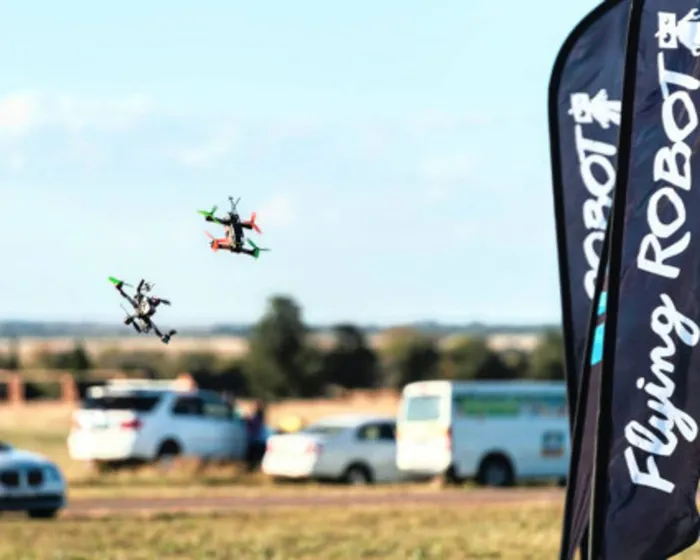Drones a growing threat to aircraft

Racing drones... The SA Drone Nationals took place at Klerksdorp's PC Pelser airport last month (April). Racing drones... The SA Drone Nationals took place at Klerksdorp's PC Pelser airport last month (April).
The growing swarm of remote-control drones buzzing around the world’s skies is creating an increasing threat to the safety of passenger planes, aviation safety experts have warned.
Officials note that remotely piloted aircraft systems (drones) were rarely seen in civilian airspace a decade ago, whereas in the past two years there has been a sharp increase in the number of drones flying “dangerously closeâ€ù to aircraft and airports.
“Today, tens of thousands of these aerial vehicles are in use worldwide, whether for recreational enjoyment or for commercial, government or military activities,â€ù according to Gilberto Lopez-Meyer, safety head for the International Air Transport Association.
Lopez-Meyer said drones were offering a wide range of new services, from delivering pizzas to suburban homes to ferrying life-saving medicines to isolated communities.
“But we must not allow them to become a drag on the efficiency of the airways or a safety threat to commercial aviation,â€ù he told journalists at the Iata annual meeting which opened in Dublin yesterday.
While most drones flew at low altitudes, there had been cases of them flying as high as 30 000 feet.
One of the main safety worries involves drones getting sucked into the engines of aircraft, potentially leading to engine failure or fires.
Lopez-Meyer acknowledged that the aviation industry already had to deal with similar threats from large and small birds.
But whereas birds were composed mainly of water, flesh and bone, drones contained metal components that could possibly cause much greater damage.
IATA official Perry Flint also noted that drones could damage the fuselages and windscreens of passenger aircraft in the event of mid-air collisions or distract the attention of pilots at critical moments during landing or take-off.
There had also been reports of passenger planes being delayed and forced to circle airports after air traffic controllers picked up unexplained radar signals that later turned out to be from wayward drones.
While most drones were quite small, military drones could be the size of a smallplane.
Lopez-Meyer said Iata, the Airports Council International and the International Federation of Air Line Pilots had warned of the potential risks posed by growing drone air traffic, and he said it was now essential for governments and other role-players to develop legally enforceable safety standards and regulations.